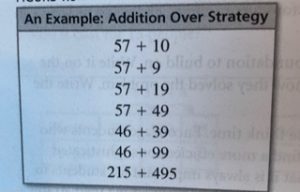A great way to get kids engaging with number sense is with the Number Sense Routine called “I Have You Need.” You provide a number and the students find the compliment to that number that could make it equal to 10, 100, 1000, etc. For example, “I have 86, you need _____[14].” This is a fast and easy way to build fluency! Math teacher extraordinaire, Michelle Chu, says she uses this strategy whenever her class is lined up and they have a couple minutes to spare!
Check out this video of a teacher doing this activity with her class on Pam Harris’ Math Blog here. (Scroll down a ways until you see the heading “I Have You Need”
Some tips for this strategy:
-Start with numbers closer to your goal number first. Then gradually work your way farther away. Ex. I have 85, I have 70, I have 60, I have 40 , I have 25.
-Then work your way into numbers that aren’t multiples of 5 or 10. For example, I have 67, I have 38, etc

 Check out the WODB website
Check out the WODB website 